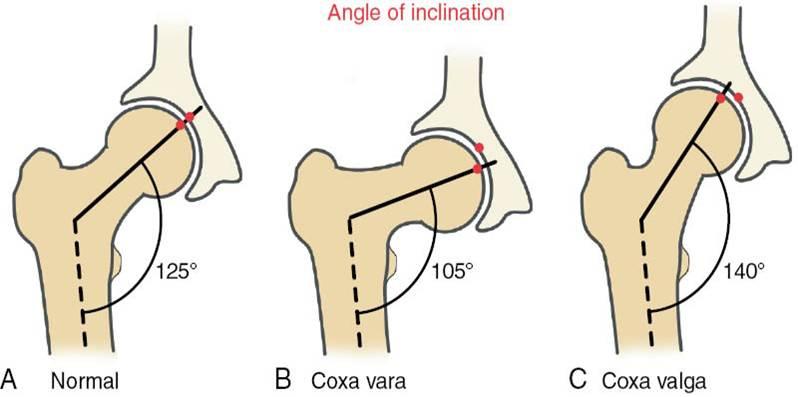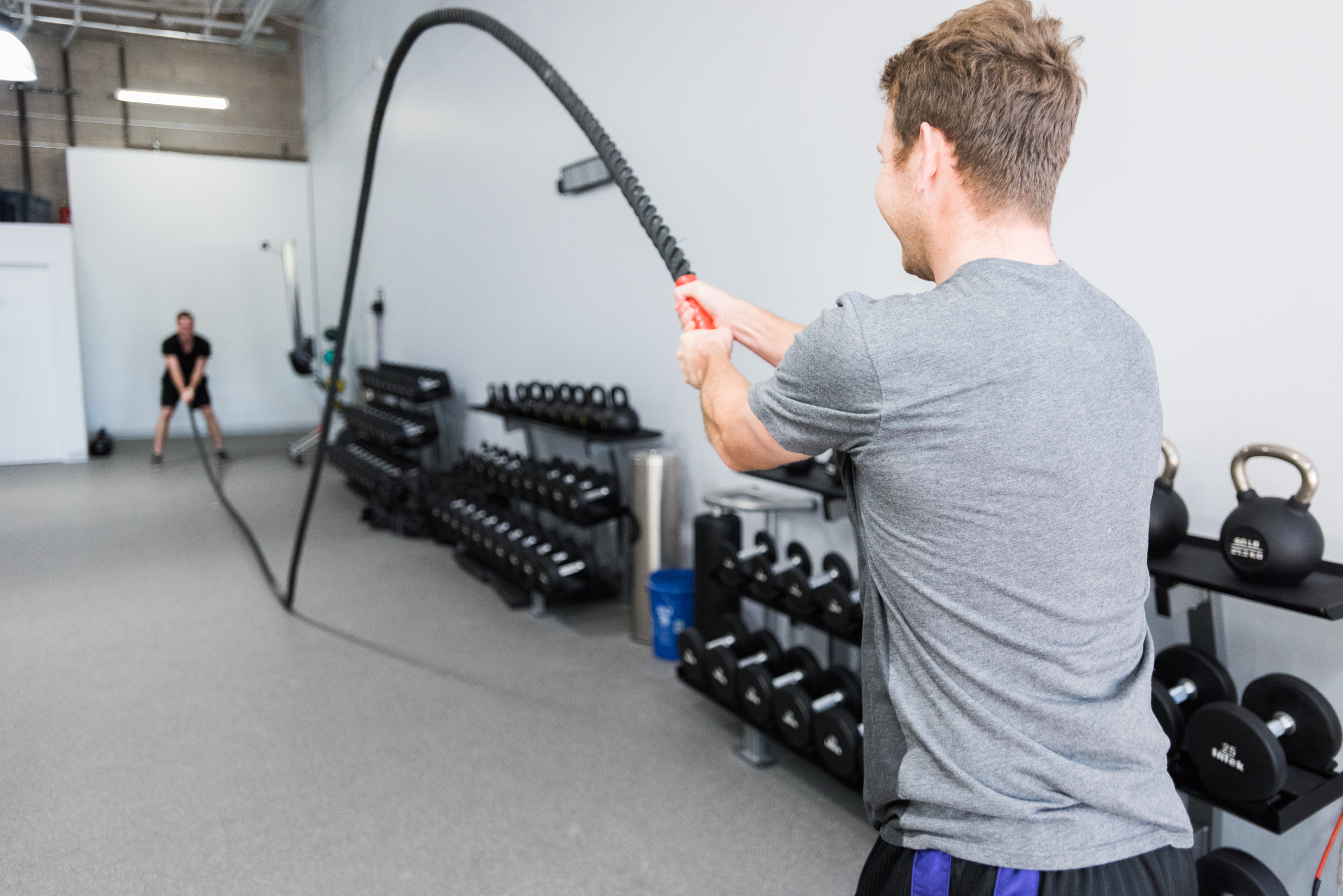The Importance of Primitive Patterns
Written by Lee Burton and Gray Cook FMS
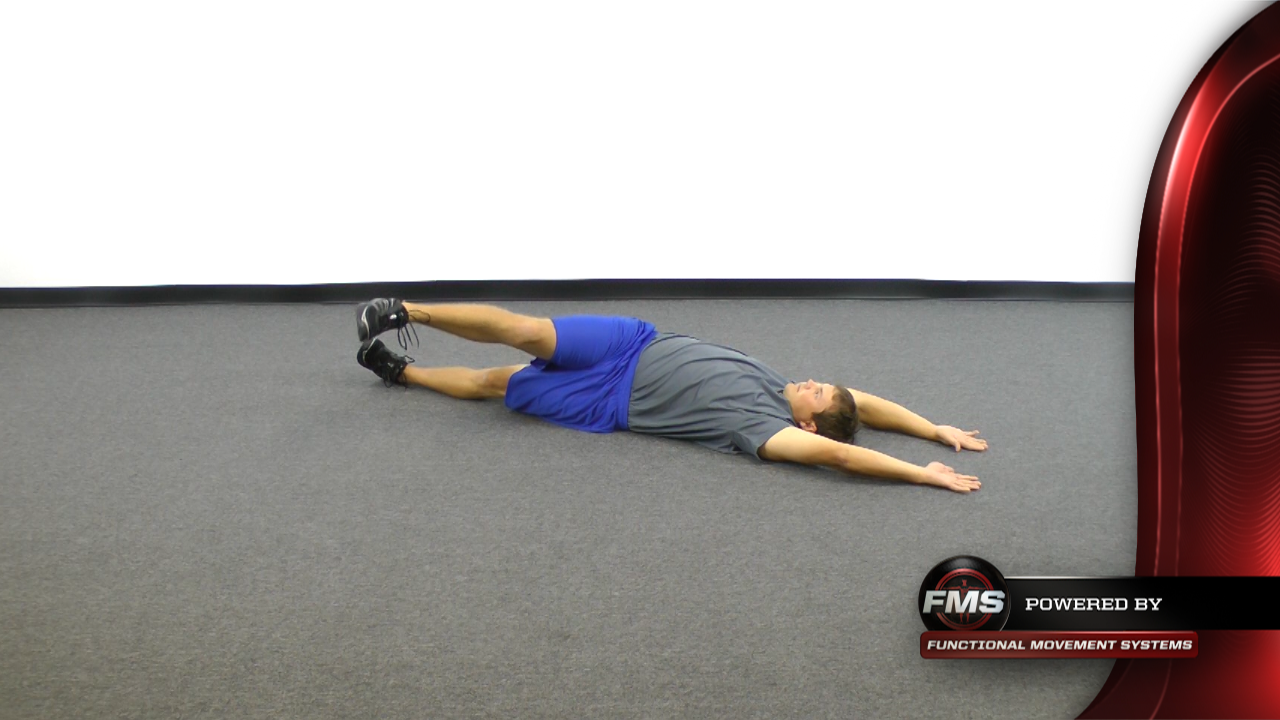
Primitive movement patterns are often not considered to be an important part of performance enhancement and fitness; however, the influence these patterns have on movement cannot be overlooked. Primitive movement patterns are used to describe those movements most humans explore during growth and development. These fundamental movements include rolling, pushing up, quadruped and crawling. It may be difficult to understand how movements such as crawling or rolling relate to fitness, performance enhancement and general wellness. The simple answer is everything. The development of fundamental movement is the foundation that leads to effective functional movement. This foundation is often neglected in the approaches we take to enhance function and/or performance through exercise programming.
The first rule of functional performance is not forgetting fundamentals. We enter this world as infants with unrestricted mobility; we then learn to stabilize our hyper-mobile system, quickly progressing to movement. We commonly use positions every day in fitness and performance enhancement that could be considered primitive patterns. Bridging, planking, quadruped and any supine or prone activity could be considered a primitive pattern. Babies explore these types of positions of mobility and stability on their journey toward higher-level functional movement and locomotion.
.Still002.png) Even though many fitness professionals use certain primitive movements in their programming, these movements are typically only utilized to improve overall quantity or performance, not quality or efficiency. In many cases, we incorporate bridging and planking, but do we ever stop and look at abilities on a single leg bridge or a side plank and note the differences between the left and right side? We look at quadruped diagonals, but do we count the reps and observe the quality between the two sides? Do we even consider that our clients and athletes can roll effortlessly to one side but present difficulty in a completely different movement pattern when going to the other side?
Even though many fitness professionals use certain primitive movements in their programming, these movements are typically only utilized to improve overall quantity or performance, not quality or efficiency. In many cases, we incorporate bridging and planking, but do we ever stop and look at abilities on a single leg bridge or a side plank and note the differences between the left and right side? We look at quadruped diagonals, but do we count the reps and observe the quality between the two sides? Do we even consider that our clients and athletes can roll effortlessly to one side but present difficulty in a completely different movement pattern when going to the other side?
Fitness and performance enhancement professionals too often overlook the fundamental movements because general fitness and athletic populations can often perform many high level movements without easily observable deficits. In many instances, individuals can accomplish this by utilizing compensatory and inefficient movement patterns due to limitations and asymmetries. The Functional Movement Screen was first introduced to give us greater relative insight into primitive patterns by identifying these limitations and asymmetries.
Basic primitive movement patterns have been a part of stroke rehabilitation within physical therapy for quite some time. Physical therapists dealing with neurological problems understand that if the brain does not recognize a limitation, it will compensate around it. Compensation is a survival mechanism, and your clients and athletes will opt for compensation when you neglect to identify problems with mobility and stability. It is nearly impossible to use your large muscle groups and prime movers to execute these simple primitive patterns with any degree of efficiency or quality. It is a great way to take the prime movers out of the equation and observe the stabilizers as they function in a real life situation. One of the biggest mistakes we make is to bring conventional strength and conditioning wisdom to stabilization training. These stabilizer muscles are designed to work all day in mostly static positions, maintaining alignment of the joints and posture of the body; they do not respond to three sets of 10 reps or conventional strength training. They are not designed to hypertrophy with exercise, yet with the right amount of training, they will support your skeletal system and protect your joints. This will allow much better performance from your prime movers and large power muscle groups.
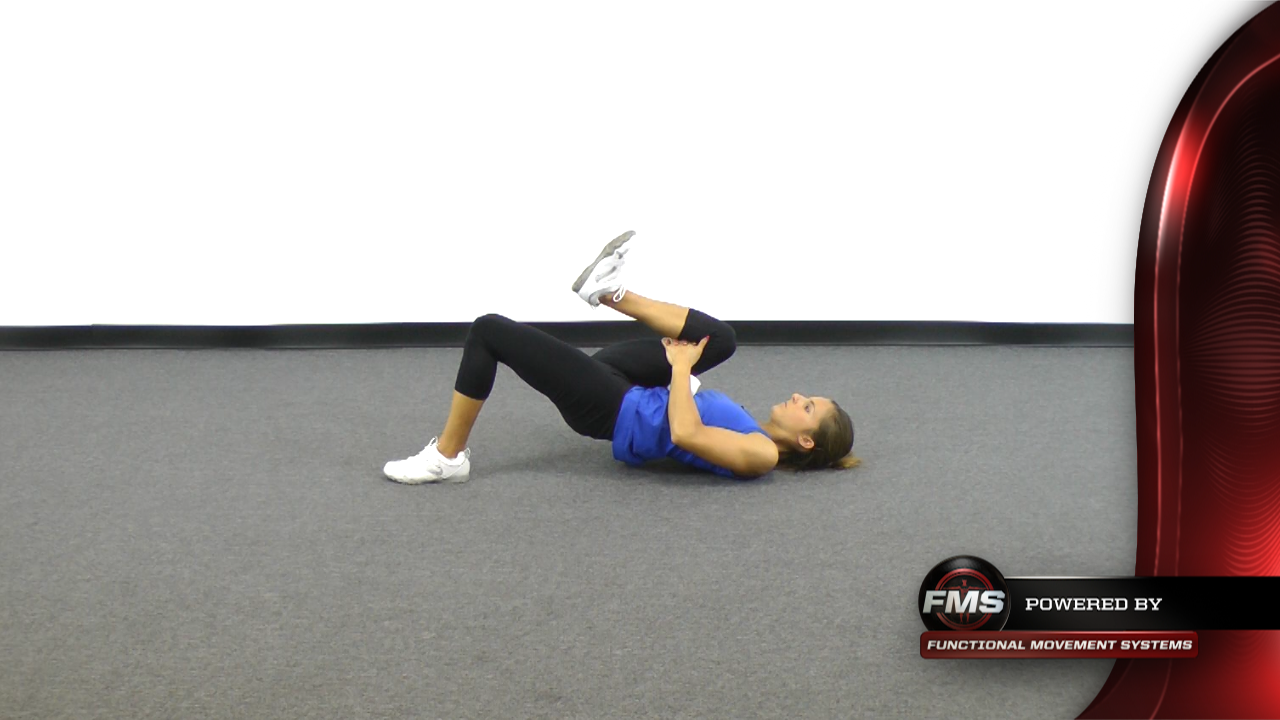 The biggest misconception with training stabilizers is conscious execution of exercise. It should not require a lot of thought to perform a side plank, a single leg bridge or a roll. These movements should not be coached. If you do not observe reflex stabilization, there’s a good chance your client or athlete is not using stabilization in an effective or efficient manner. Reflex stabilization is a natural, automatic response (without coaching or cueing) of the stabilizers in anticipation of an activity of movement.
The biggest misconception with training stabilizers is conscious execution of exercise. It should not require a lot of thought to perform a side plank, a single leg bridge or a roll. These movements should not be coached. If you do not observe reflex stabilization, there’s a good chance your client or athlete is not using stabilization in an effective or efficient manner. Reflex stabilization is a natural, automatic response (without coaching or cueing) of the stabilizers in anticipation of an activity of movement.
In order for reflex stabilization to occur, adequate mobility must be established initially through some form of flexibility work. Once the individual has established proper mobility, primitive patterns should be utilized to improve the limitations and asymmetries, which deter proper reflex stabilization.
Even if a client or athlete can contract and isolate important muscle groups like the glut medius or transverse abdominus, that is no guarantee that they will use these muscles effectively in a functional situation. The muscle and joints must utilize proper timing, coordination and communication in order to effectively move and/or stabilize the system. Simply contracting a muscle does not demonstrate that it will work appropriately; it only demonstrates that it is somehow connected to the brain. We have made this assumption for far too long. The ability to exercise and contract stabilizers only demonstrates that they have the capacity to work; but it doesn’t demonstrate that they have the ability to perform their primary role, which is stabilization.
Next time the opportunity presents itself, here are some quick ways to check primitive pattern stabilization techniques.
1. Observe a single leg bridge, left and right side, first for quality in a static hold, and then look for quantity in a series of repetitions comparing left to right side.
2. Observe side plank ability, both for quality and alignment, and two, for quantity, seconds per hold.
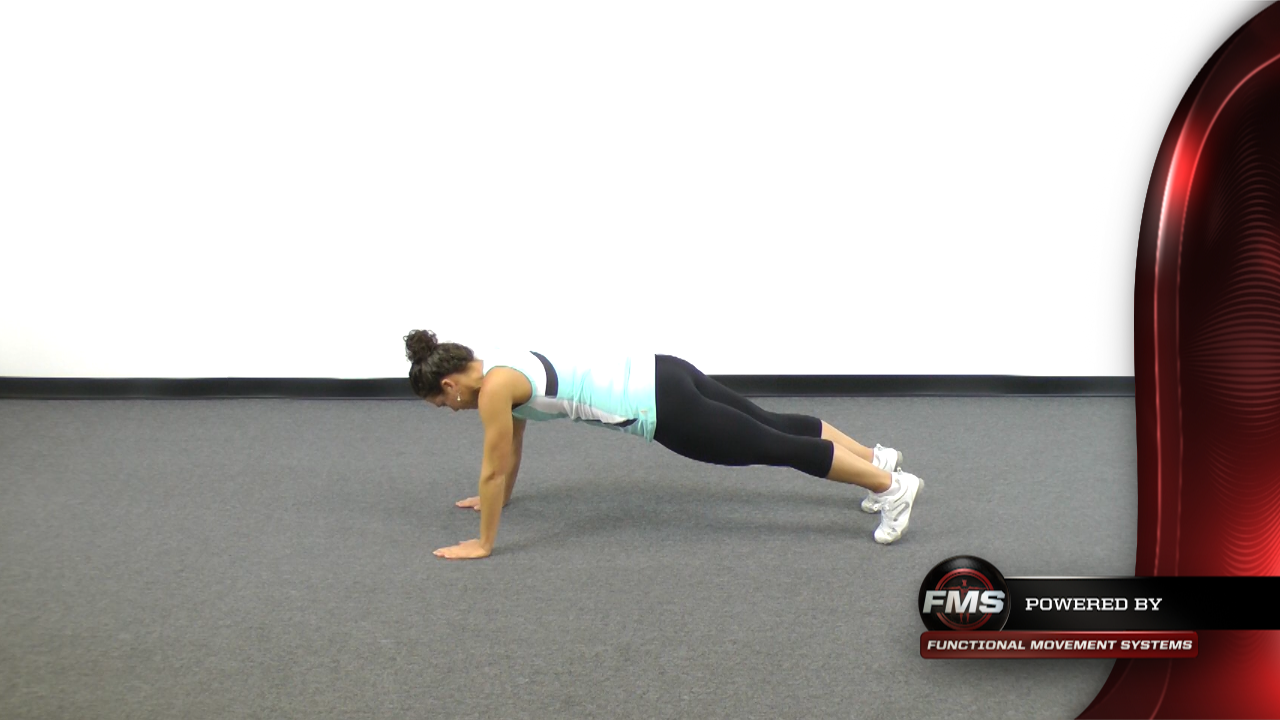 3. Observe push-up position in a more advanced client or athlete. Instruct them to get in the start position for a push-up: elbows extended, neutral spine and then elevate the right leg. Repeat a series of push-ups with the right leg elevated and look for any loss of stability between the pelvis and the shoulders. When difficulty or loss of stability is noted, mark the number of repetitions completed and then repeat with the left leg elevated. The single-leg push-up demonstrates stabilization effort throughout the torso and hips during movement of the upper extremities. It is an excellent demonstration of how stability can diminish across repetitions or through fatigue.
3. Observe push-up position in a more advanced client or athlete. Instruct them to get in the start position for a push-up: elbows extended, neutral spine and then elevate the right leg. Repeat a series of push-ups with the right leg elevated and look for any loss of stability between the pelvis and the shoulders. When difficulty or loss of stability is noted, mark the number of repetitions completed and then repeat with the left leg elevated. The single-leg push-up demonstrates stabilization effort throughout the torso and hips during movement of the upper extremities. It is an excellent demonstration of how stability can diminish across repetitions or through fatigue.
4. Quadruped diagonals are another activity to look at the plasticity of the stabilizers. In this activity, you will lift opposing upper and lower extremity to create a diagonal pattern. We recommend doing it with a moderate degree of resistance and a cue for neutral spine, which could be a foam or towel roll placed at the lower back. Don’t become obsessive about neutral spine; just instruct the client or athlete that they are not to drop the roll during execution of repetitions. Encourage the client or athlete to perform a slow, steady rep out, opting for maximum length between the outstretched arm and outstretched leg, and then note the number of repetitions with light to moderate resistance. Compare to the opposite diagonal pattern for both quality and quantity of repetitions. An optimal testing situation would place the individual at between 20 and 40 repetitions; therefore, choose your resistance accordingly and note differences between the capacity of repetitions and quality of repetitions between one side and the other. Regardless of the level or exercise experience of the individual, you may be surprised at differences in capacity between the right and left side.
.Still003.png) Consideration of primitive patterns can help make you a more intuitive and intelligent fitness professional. Very often we become experts in exercise without considering growth and development, which is where the fundamentals of movement were first established. For example, no child walks if they don’t establish crawling patterns first. Yet, very often, we will overcoach squatting, lunging and dead-lifting, without even considering the quadruped diagonal pattern, which in theory, is a representation of the crawling pattern.
Consideration of primitive patterns can help make you a more intuitive and intelligent fitness professional. Very often we become experts in exercise without considering growth and development, which is where the fundamentals of movement were first established. For example, no child walks if they don’t establish crawling patterns first. Yet, very often, we will overcoach squatting, lunging and dead-lifting, without even considering the quadruped diagonal pattern, which in theory, is a representation of the crawling pattern.
Children develop naturally and symmetrically with adequate stability and no limitations in mobility. Preferential activities and injuries create imbalances and asymmetries that most fitness and performance professionals often contend with as individuals grow in age. Unfortunately, there are many trainers and coaches who ignore or overlook these problems, creating further compensation and asymmetries. The most intelligent fitness and performance professionals do not ignore these asymmetries and limitations; they confront them head on; they modify workload, reduce positions and even resort to primitive patterns to correct the root cause of the problem.
Modern fitness and training science has bestowed upon us the ability to create fitness in the presence of extremely poor dysfunction. This dysfunction means that fundamental movement patterns are limited, asymmetrical or barely present. Just because we can make people fit on top of this does not make it right. Seated, fixed-axis equipment perpetuates the illusion of fitness without enhancing functional performance. It is absolutely possible to add fitness to dysfunction, but that does not make it right. Utilize all of your tools to uncover an individual’s dysfunction and then work to correct it. The result will be an individual who moves more efficiently, thereby creating a foundation for more effective strength, endurance and power training.
Related Resources
-
10 Things I Learned from Gray Cook
Posted by Marc Perry
Please login to leave a comment
7 Comments
-

Michael 12/18/2014 7:16:16 PM
Solid read.
-

GILBERT CHAVARRIA 12/18/2014 7:16:15 PM
Amazing insight.
-

Alan 12/18/2014 7:13:57 PM
Thanks
-

Nijah 1/11/2016 9:30:03 PM
Interesting and insightful
-

Maria Mitea 10/28/2016 5:08:16 PM
I started to practice primitive movement and see a huge differences in how I feel in my body when moving to more complex workout. Great article!
-

Ron Spallone 12/21/2016 7:09:17 PM
Just as football coaches, even in the professional ranks, perpetually refer to 'going back to the fundamentals', I believe this is also and profound and true for health professional when doing pre-hab or rehab. I use rolling patterns all the time as both an assessment tool as well as a recommended rehab exercise
after doing the Functional Movement Screen in our Littleton, Colorado clinic. -

Anthony J. Moreno 12/19/2016 9:22:56 PM
Great article!

